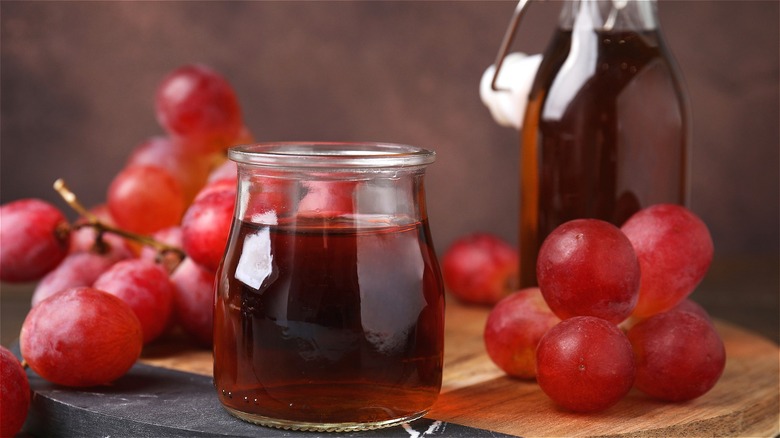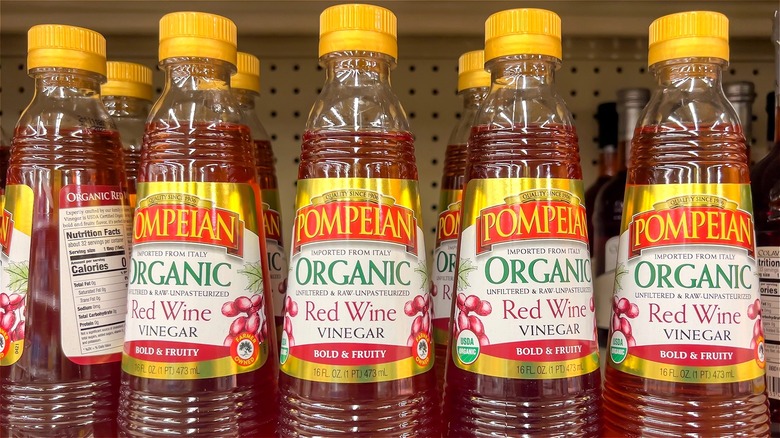Wait, Does Red Wine Vinegar Have Alcohol In It?
Who doesn't love a classic Italian salad dosed in red wine vinegar, quality olive oil, and savory herbs? If you and your family (kids included) love the taste of red wine vinegar, you may have wondered from time to time whether or not this robust ingredient contains real alcohol. After all, with such an obvious title, one can easily surmise this pungent acidic ingredient is made from red wine. While you can't exactly compare your nightly vino to red wine vinegar on a 1-to-1 scale, the latter does, in fact, contain trace amounts of alcohol.
By definition, vinegar is made through the fermentation of alcohol by way of acetic acid bacteria. Unlike traditional red wine which is made through the conversion of sugar to alcohol, vinegar undergoes a second crucial step in the fermentation process. Once sugar turns into alcohol, with perpetual exposure to yeast, carbon dioxide, and airborne acetic acid bacteria, this alcohol slowly transforms and sours into acetic acid which makes vinegar. When all is said and done, while bacteria works hard to consume the alcohol in wine to make delicious red wine vinegar, there will always be scant amounts present in the resulting product. However, the measured alcohol in an average bottle of red wine vinegar is often too small to make an impact.
Exactly how much alcohol is in an average commercialized bottle of red wine vinegar?
While the amount of residual alcohol may vary by bottle, the U.S. government has specific regulatory protocol surrounding the production of vinegars in the U.S. Luckily, if you're purchasing red wine vinegar from the supermarket, you don't have to worry about experiencing a vast difference in alcohol content based on your selection. No factory-produced vinegar made in the U.S. can exceed 2% alcohol by volume. Therefore, based on the limited amounts of vinegar required to make basic vinaigrette or simple chimichurri, you don't have to worry about overdoing it come mealtime.
In actuality, red wine vinegar is not considered an alcoholic product. Store-bought vinegar is diluted so each bottle contains mostly water combined with 5% acetic acid. Most commercialized bottles of red wine vinegar don't exceed alcohol by volume greater than 1.5%.
Conversely, if you attempt to make your own red wine vinegar, the process is more involved and takes a concerted amount of effort to ensure effective results. While leftover red wine may sour on its own over a period of months, the remaining amount of alcohol may be more difficult to determine. To create homemade vinegar with a strong acidic flavor and reasonably low alcohol count, introduce acetic acid bacteria into diluted wine by way of a mother culture or unpasteurized vinegar at the beginning of the fermentation process. Yet, to ensure a low alcohol count, any available variety at your nearest grocery store will do.

